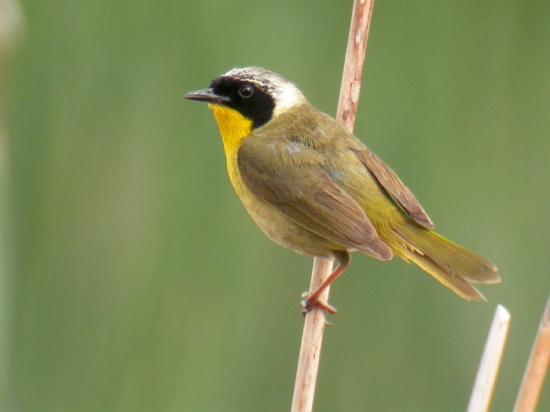- Geothlypis trichas
Description
4 1/2-6" (11-15 cm). Olive-brown above, bright yellow on throat and upper breast. Male has bold black mask, bordered above with white. Females and young males lack face mask, but may be recognized by bright yellow throat and wren-like behavior.
Identification
Perching Birds
Common Yellowthroat
Geothlypis trichas
Description 4 1/2-6" (11-15 cm). Olive-brown above, bright yellow on throat and upper breast. Male has bold black mask, bordered above with white. Females and young males lack face mask, but may be recognized by bright yellow throat and wren-like behavior.
Voice Loud, fast witchity-witchity-witchity-witchity-wit or which-is-it, which-is-it, which-is-it. Call a sharp chip.
Habitat Moist thickets and grassy marshes.
Nesting 3-5 white eggs, with brown and black spots, in a loose mass of grass, sedge, and bark, lined with rootlets, hair, and fine grass, and concealed on or near the ground in a dense clump of weeds or grass.
Range Breeds from Alaska, Ontario, and Newfoundland south throughout United States. Winters in southern states and in tropics.
Discussion A small bird with a yellow throat, skulking in the grass or weeds of a marshy spot, is almost certainly a Common Yellowthroat, whose cheerful song is well known. At the height of the breeding season, the males perform an attractive flight display, mounting into the air while uttering a jumble of high-pitched notes, then bouncing back into the grass while giving the usual song. To foil predators, parents drop down into the thick of the grasses or weeds, secretly approach their well-hidden nest, deliver the food, and depart by another route. The bird is the northernmost member of a group of yellowthroat species that occurs as far south as Argentina.




